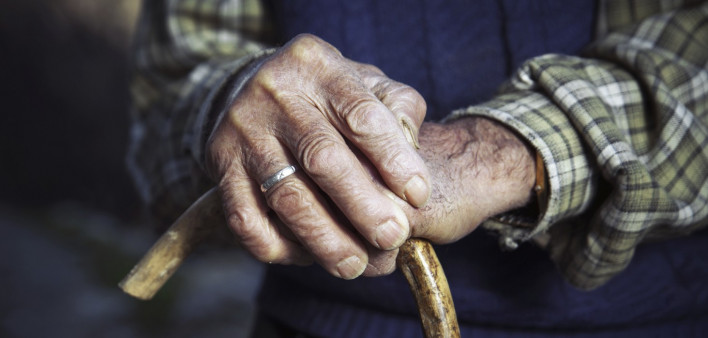Middle-aged and elderly men living with HIV have twice the rate of frailty as their HIV-negative peers, aidsmap reports. Frailty interferes with an individual’s ability to perform ordinary tasks as a result of decreased energy and strength and is associated with adverse health outcomes.
Publishing their findings in AIDS, researchers conducted a study of 399 men participating in the Multicenter AIDS Cohort Study’s bone sub-study. The men, 199 of whom had HIV while 200 did not, ranged in age between 50 and 69 years old and had a median age of 60. The HIV-positive men were all on antiretrovirals (ARVs), for a median 12.5 years, and had a median CD4 count of 641.
The study authors determined whether participants were frail according to various measures, including unintentional weight loss, exhaustion, slow walking speed, low levels of physical activity and grip strength. Body composition factors analyzed included body mass index, waist circumference, visceral adipose tissue (fat around the internal organs), subcutaneous adipose tissue (fat beneath the skin), bone mineral density and sarcopenia (loss of muscle tissue as a result of aging).
Sixteen percent of the men with HIV and 8 percent of the men without the virus had frailty. Of the men with and without the virus, a respective 41 percent and 36 percent had sarcopenia, 56 percent and 41 percent had visceral adipose tissue and 16 percent and 9 percent had one of the bone loss disorders of osteopenia and osteoporosis.
After adjusting the data to account for other factors associated with frailty, including depression, hepatitis B or C virus coinfection, reduced kidney function and diabetes, the researchers found that HIV was associated with a 2.43-fold increased risk of frailty.
Men with the top third of measurements of waist circumference and those with visceral adipose tissue were a respective 4.18-fold and 4.45-fold more likely to have frailty than those in the bottom third. Among those with HIV, those in the top third of waist circumference measurements were 7.28-fold more likely to be frail than those in the bottom third.
Men with sarcopenia were 2.68-fold more likely to have frailty and 4.08-fold more likely to have frailty if they had HIV. Men with osteoporosis were 13.6-fold more likely to have frailty.
To read the aidsmap article, click here.







Comments
Comments